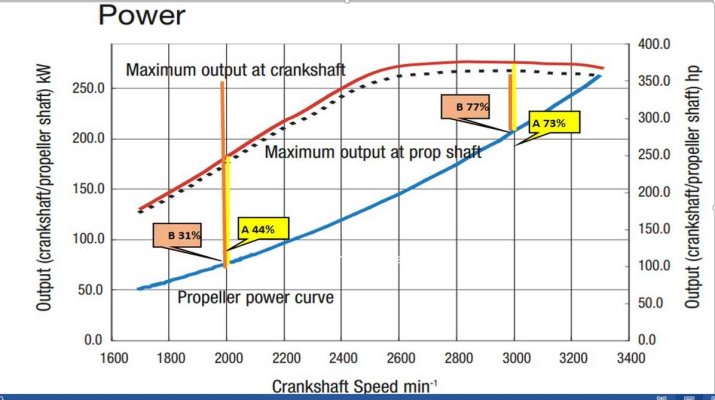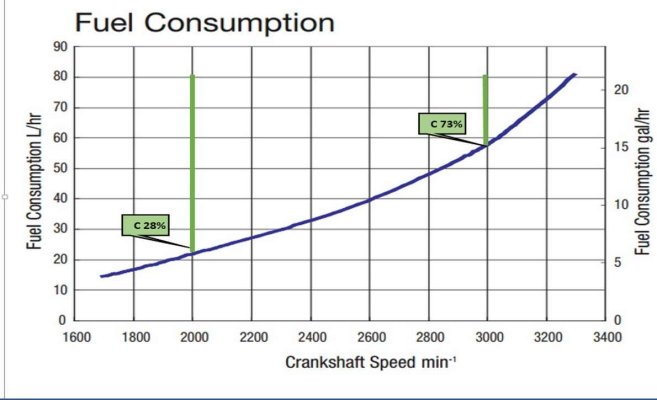I'll start by admitting I'm a diesel novice but trying to absorb and understand as much as possible here at TF.
I have no interest in entering the underloading debate so decided to start a separate thread.
I understand that load IS NOT RPM / WOT RPM but...
Can some of the experts here clarify how to calculate % loading correctly.
Assuming WOT meets Mfg Specs - is % Load... (see attached for Yanmar 6lya - STP Ex's)
A - Prop Power / Crank Power for any RPM
B - Prop Power / Prop Power @ WOT
C - Fuel Consumption @ RPM / Fuel Cons @ WOT
D - Other??
I have no interest in entering the underloading debate so decided to start a separate thread.
I understand that load IS NOT RPM / WOT RPM but...
Can some of the experts here clarify how to calculate % loading correctly.
Assuming WOT meets Mfg Specs - is % Load... (see attached for Yanmar 6lya - STP Ex's)
A - Prop Power / Crank Power for any RPM
B - Prop Power / Prop Power @ WOT
C - Fuel Consumption @ RPM / Fuel Cons @ WOT
D - Other??



